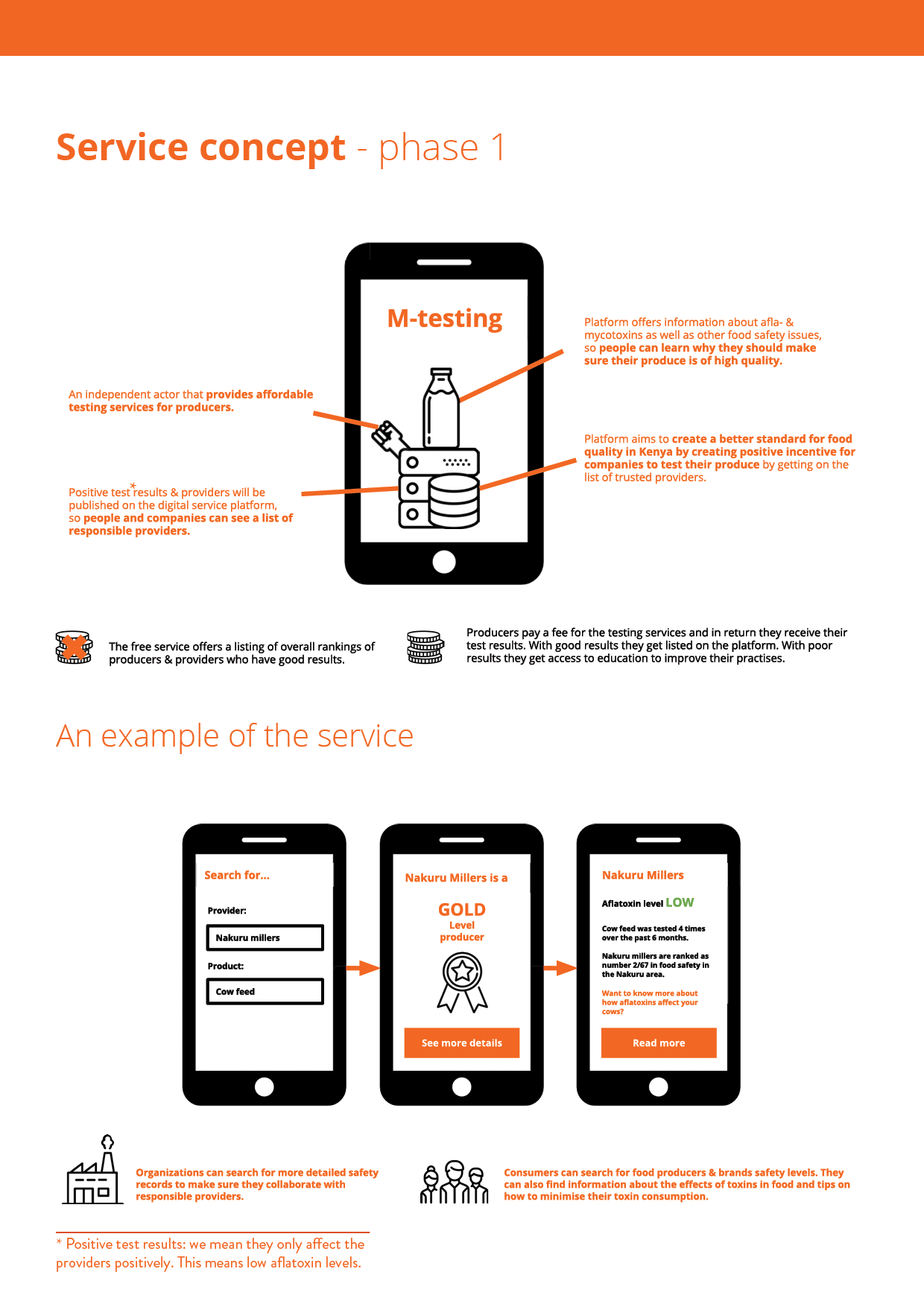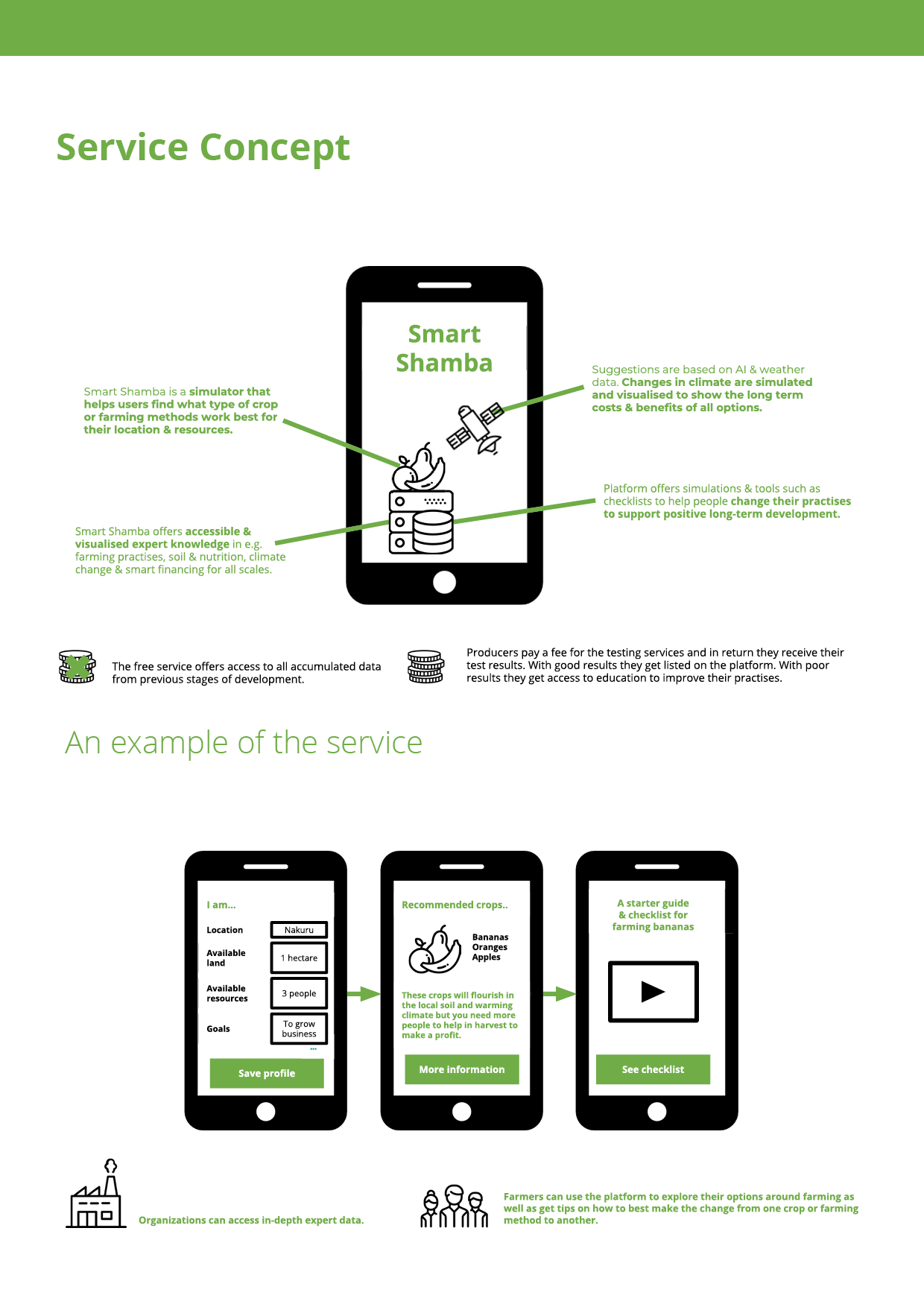Our final solution for the project is a roadmap to tackle the wicked problem of food safety and aflatoxins in Kenya in three steps.
The three steps are:
- Matching testing
- Matching stakeholders
- Using tech & data
In our solution roadmap we have identified the insights & background needs for each step as well as refined service maps, business models and visual communications for each step and concept.
Click here to read and download our final solution roadmap
Too watch our pitch from the final presentation event IDBM Impact 2018, click here.
Thoughts and reflections behind the final solution roadmap
In our proposal of the final concept, we put the emphasis on that three concept stages are designed consistently based on a single final dream to achieve the ideal food safety environment in Kenya, based on insights and trends that can be seen globally. We have the confidence that if these three stages could be achieved, it would be possible to achieve the holistic solution of the complex challenge crossing the domain. As informed by our desk and field research; this abstraction level might be reached vertically and horizontally while working on these three levels of the solution.
In light of the situation of infrastructure development including the smartphone access in Kenya, this concept sounds like it would not be realistic right now, but if we can start preparing the business activities now, we can see it being closer to being a reality after few years. It is impossible to know how the systemic changes required to make the changes will affect the rest of the system, which is why the change needs a holistic and collaborative approach involving all stakeholders in the change.
There are basically two big challenges which we may face when putting this concept into practice. One is the challenge of attracting a large number of stakeholders across various organisations including the farmers, producers, large farming corporate, research institute and so on. The success of the platform business activity much relies on how much people could be gathered in a platform. The other challenge is the interaction or coordination with public organisations in Kenya which have the formal privilege to take care of food safety in general and food quality control, which may require the close communication or alignment.
In order to effectively tackle these challenges and other unforeseen challenges, we can take the approach of prototyping in the early stages and conducting verification as an approach to solving the issue. This way we can uncover the unmet challenges in the practical level and make improvements quickly and reactively, as well as involve the necessary stakeholders in the development. It’s also worth noticing that the user feedback for the prototyping drive the iterative improvements for the usability to gain the attraction from many users.



